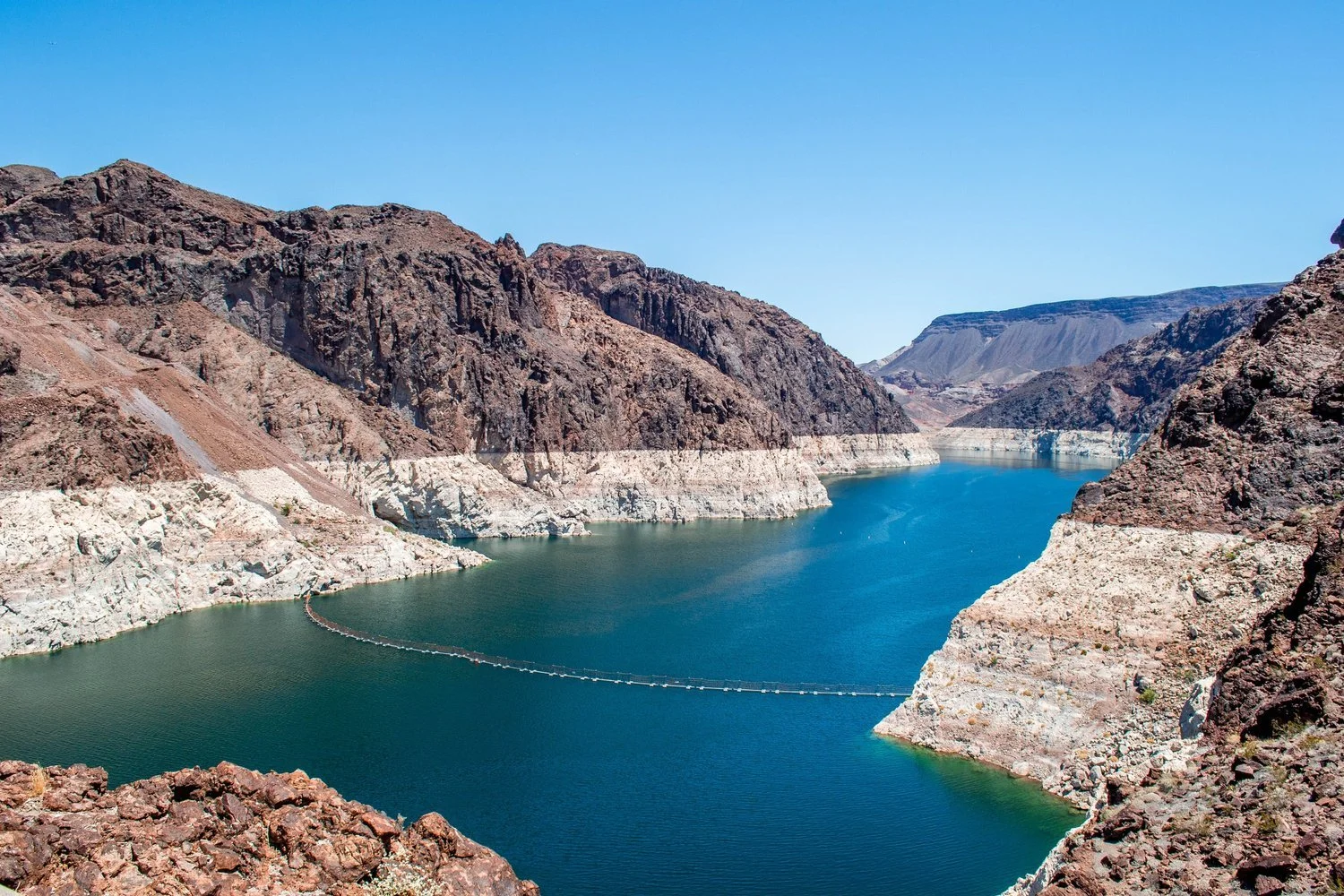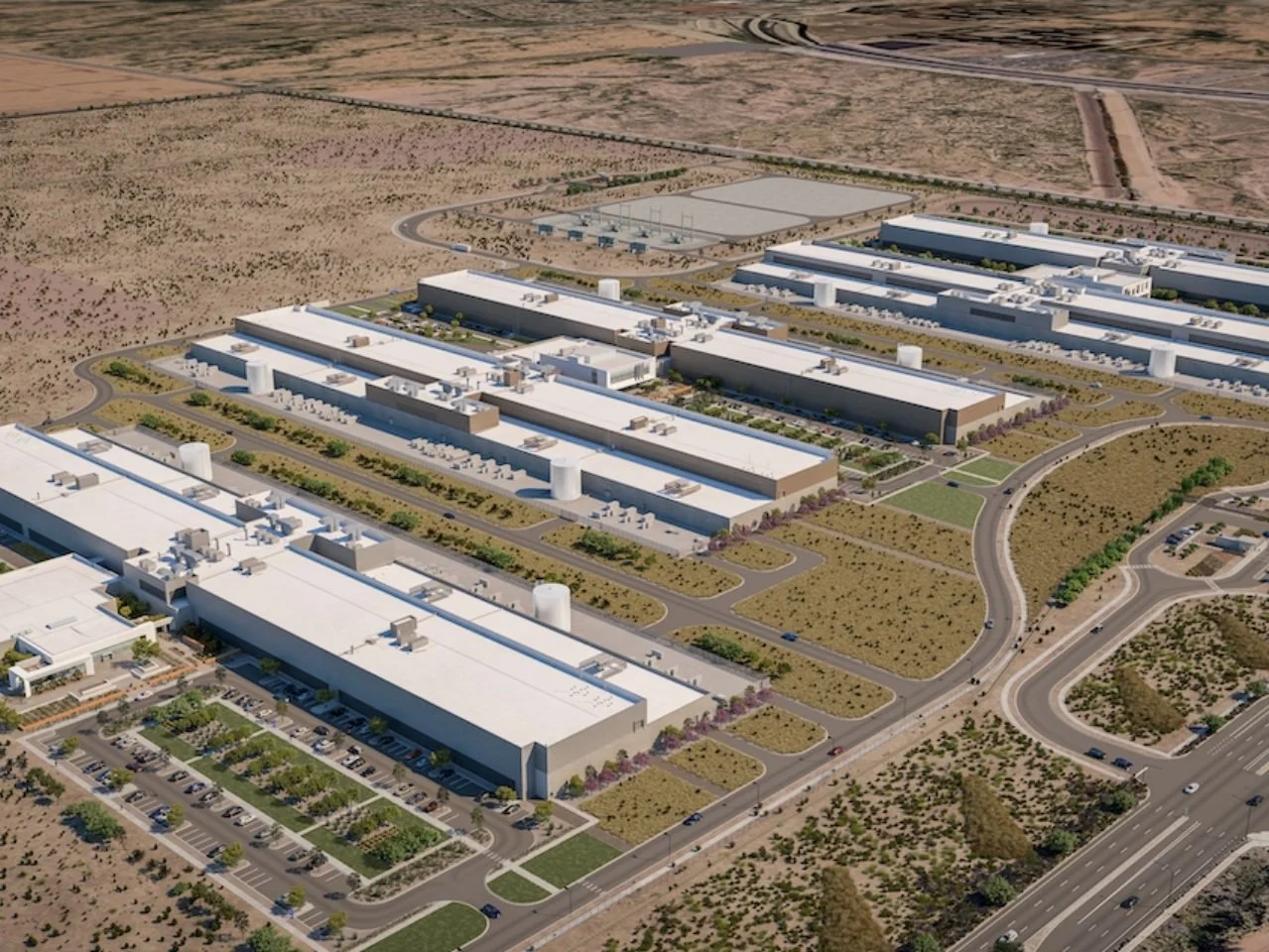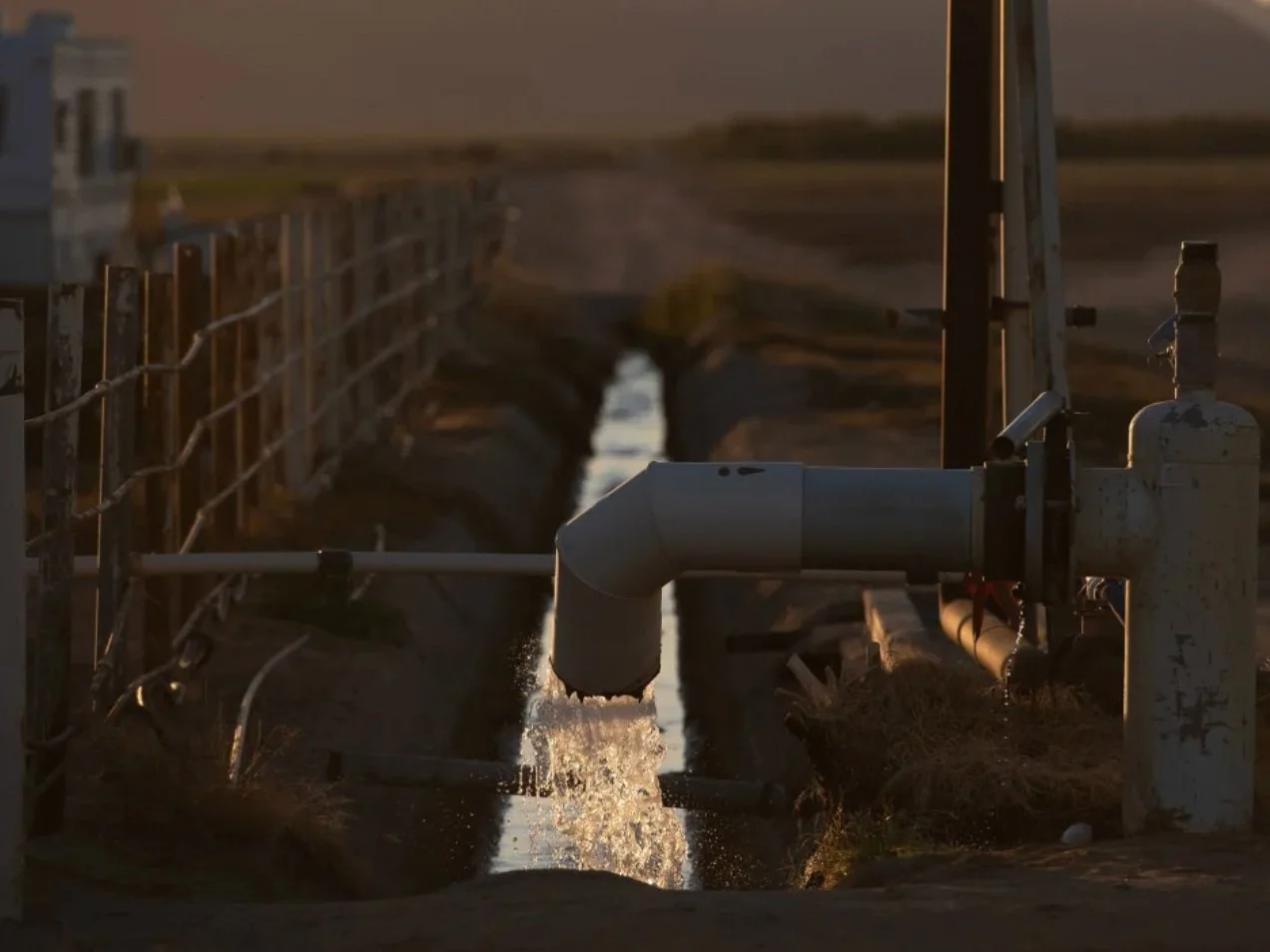Can Agriculture-Led Solutions Solve Arizona’s Water Crisis?
This past summer, Arizona broke its record for the hottest month to date and the hottest month ever observed in a U.S. City. Arizona is also currently in the worst megadrought experienced in the past 1,200 years, and this year nearly 35% of the Central Arizona Project’s normal water supply was slashed due to water rationing, extended drought conditions, and the effects from environmental changes.
Pair Arizona’s diminishing water resources with the rapid rate at which the state is continuing to grow– with sprawling new housing developments and data centers, large warehouses, and distribution centers being built in the desert– and the state moving closer to a water crisis seems inevitable. However, understanding the full context of the water situation, and possible solutions, is key to Arizona coping with its water future.
Where is the Water Going?
Activities inside and beyond Arizona are greatly affecting the availability of water, particularly for the largest user– agriculture. Changing what and how the state grows food is a crucial step in helping to adapt to water challenges, but there are also other factors that determine where Arizona’s water resources are going, what they are used for, and who they benefit the most.
Water Speculation
Private investors, pension fund managers, and private equity firms are buying thousands of acres of Arizona’s agricultural lands in order to obtain its water rights and then selling the rights to the highest bidder– often nearby suburbs or cities. Water speculation, as the activity is called, is not unique to Arizona, but a nationwide effort of private investors to financially benefit at the expense of local communities and small farmers. And much of this water speculation is happening in areas where water resources are dwindling and scarce.
In some U.S. states, private investors are spending tens of thousands of dollars to elect candidates to water boards that regulate limited water supplies, or even elect themselves. Stacking governing water boards in favor of private investors threatens local water-sharing agreements made between cities and farmers to collectively manage strained water supplies. New board members could potentially undermine these agreements by redirecting funds to go elsewhere, like to water-for-profit deals with private investors. In the midst of drought conditions, private companies are profiteering and draining water supplies from small communities and local farmers.
Big Tech and Data Centers
A large influx of Big Tech data centers are being built in Metro Phoenix– the new data center destination. The giant data centers run by Google, Microsoft, Apple, and Meta use large amounts of water to cool the processing equipment used to store data. While the companies claim they are implementing ways to conserve and reuse water, the sheer amount of water (and energy) needed to operate the enormous centers is alarming. The typical data center guzzles about 3 to 5 million gallons of water per day— or as much as a city of 30,000– 50,000 people– and has a large environmental footprint.
Photo credit: AZ BIG MEDIA
For Google’s planned massive data center in Mesa, the city agreement guarantees Google one million gallons of water a day to cool the facility, and up to four times as much if it hits project milestones. Google often places data centers close to large population centers to help its web services respond quicker. In Arizona, this often means building large centers in hot, dry, and crowded areas where the processing units and servers inside heat up quickly and more water is needed to cool them down.
In 2021, Microsoft said that its Arizona data centers would use "zero water" for cooling using adiabatic cooling, which uses outside air instead of water. That only works, however, when temperatures are below 85 degrees, which means for much of Arizona’s summer months this cooling method does not work.
In addition to consuming millions of gallons of water a day, these large data centers often replace farmland. Farms that once provided cooling green spaces and local food production are increasingly being replaced by large concrete, water-guzzling operations.
Industrial Agriculture Operations
Industrial agribusiness– often backed by financial players– are aggressively snatching up farmland that has access to water for irrigation. Their playbook involves buying land with unrestricted access to water resources for irrigation, and then quickly growing water-intensive crops to ship elsewhere for domestic use or to sell for high prices in export markets. These profits come at a cost to small-scale producers and local communities.
Photo Credit: Rebecca Noble for CNN
In La Paz county, a Saudi Arabia owned company, Fondomonte, has capitalized on cheap state-leased land to grow water-intensive alfalfa that is exported to feed cows in the Middle East. Arizona played a significant role in incentivizing Saudi Arabia’s alfalfa operations to the state, and now it's costing taxpayers millions of dollars and draining local groundwater resources, with an estimated use of water that could supply 54,000 single-family homes a year. In another instance, in August 2023, a report revealed how Arizona’s own public pension fund is the largest investor in a land deal with an Emirati-owned farming company. The corporate farm has been draining local groundwater supplies from La Paz to grow hay that gets shipped to countries in Asia and the Middle East.
In a separate operation located in Cochise County, a mega-dairy named Riverview LLP is rapidly pumping large amounts of groundwater to grow feed for its cattle feedlot operations based in Sunizona and the Midwest. The Minnesota-based company has drilled about 21% of the 315 new wells in the basin between January 2015 and October 2019. Although the company claims to have reduced its water use thanks to more efficient irrigation methods, the rate at which it drills new, deep wells is alarming.
In about 80% of the state, Arizona has no laws overseeing how much groundwater industrial megafarms can use or a system in place for the state to monitor and track it. While groundwater management needs to be addressed, the unintended consequences of establishing regulations need to also be considered. For example, voters in the Douglas Basin in Cochise County recently approved establishing an Active Management Area (AMA) to deal with the rapid groundwater depletion from the expansion of out-of-state megafarms, like Riverview LLP. The new AMA, however, groups all agriculture water users together and has led to burdensome paperwork and legal fees for small farmers and ranchers. While large, industrial agriculture operations can afford the costs and extra work required under AMAs, small farmers and ranchers often do not have the resources.
Thirsty Crops
Arizona’s warm, dry climate makes it a prime spot to grow crops like alfalfa and cotton. With yields and quality claimed to be among the highest in the world, it would seem to make sense to grow these thirsty crops in sunny Arizona… if you have the water. The conversation about growing thirsty crops in a desert is a much heated and nuanced topic. Is growing alfalfa for dairy produced in our state, that about 70% of Arizona customers consume, an acceptable use of water resources? But is it not for a farming operation that is using local water resources to grow alfalfa that is then exported out of the country? Regardless of how to best approach those different scenarios, with dwindling water resources and climatic uncertainty, the business as usual approach to growing water-intensive alfalfa in an arid, desert environment will not secure a sustainable way of growing food in Arizona.
Photo credit: Caitlin O’Hara for The Washington Post
Growing another thirsty crop– cotton– in the desert was made possible by importing billions of gallons of water each year. Though touted as a major accomplishment of Arizona agriculture, this thirsty crop has now become a water liability propped up by federal subsidies and crop insurance programs. At a time when farmers in Arizona and other Western states might otherwise adapt to a water-scarce environment, federal farm subsidies are helping preserve a system in which the thirstiest crops are grown in some of the driest places. Instead, funding needs to incentivize farmers to take steps to conserve water by switching to less water-intensive crops and to build markets for them.
Trading One Crisis for Another
While water reductions impact all the state’s residents, agricultural products often feel the effects the most. The agricultural sector is the largest water user, which highlights the crucial role that farmers and ranchers play in both the repercussions of water scarcity and its solutions.
Usurping water from food production in the name of water conservation to temporarily quench the thirst of rapidly expanding urban and suburban communities, cool mega data centers, or to fill the pocketbooks of financial players is replacing a water crisis with a food crisis. And rarely is that water ever returned. During a time when building resilience in our local food production capacity is critically needed, cutting agriculture for short-sighted economic gains will not only worsen the state’s water situation but will threaten food security and food sovereignty.
Photo Credit: Oatman Flats
Agriculture-Led Solutions
Solutions to adapt to changing water and climate challenges can be as complex as the conditions that have created them, but they are there and possible.
New producers moving into the agriculture space will not have the same access to water resources as previous ones did. With an over-allocated Colorado River and depleting groundwater resources, farmers and ranchers will be asked to have a different approach to growing and raising food in the state. Consumers will be asked to adapt to and support what may be different on our plates. And, policymakers will need to work collaboratively with producers in our state, develop trust, and create solutions that are designed around local context. Below are ways to solve our impending water crisis by placing agriculture at the center:
Focus on soil health. In a time when Arizona is needing to meet additional water cutbacks and build drought resiliency, healthy soil is needed more than ever. Every one percent increase in soil organic matter can retain an inch of water (est 16,000-20,000 gallons of water) per acre. Returning the microbial health of the soil will allow it to function as it is intended to– like a giant sponge that retains water and promotes soil fertility to buffer itself from drought or floods and grow nutritious food. The cheapest and best place to store water is in the soil.
Preserve farmland, both in urban settings and rural communities. As Arizona is experiencing reduced water supplies, the knee-jerk reaction is to cut farmland or fallow it. Fallow land worsens the local (and macro) water cycles; droughts do not cause bare ground, bare ground causes droughts. It also creates massive dust storms, pollution, and devastates rural economies. Instead, integrate farmland into urban design and also preserve it through conservation easements and community land trusts.
Support transitioning from conventional agriculture to organic and regenerative agriculture. The design of the 2023 U.S. Farm Bill must allot federal funding to help with this transition. This piece of legislation is pivotal in designing how we do agriculture—whether we continue to subsidize the business as usual approach to agriculture or incentivize agricultural practices that help us adapt to a drier and hotter Arizona while becoming less reliant on fossil fuels inputs like fertilizer, pesticides, and insecticides.
Look to the past for present-day answers to our water challenges. Native cultures have known how to thrive within their desert-arid environment for thousands of years, through Indigenous Ecological Knowledge. Their use of desert-adapted crops, dryland farming, and Native agriculture practices are models to replicate and include in farm bill funding.
Incentivize diversity in farming. Monocultures of any kind cause a cascade of compounding negative effects. From the loss of soil fertility, to the loss of nutrient and water cycling, to creating less nutrient-dense food, a lack of diversity on the farm stunts the health and productivity of an entire ecosystem. If we need to grow with less water, promoting diversity is key.
Support producers growing desert-arid adapted varieties of crops. Oatman's Flat Ranch, for example, has transformed degraded land and depleted soil into a regenerative farming operation by growing crops best suited for a desert-arid environment. For every pound of heritage wheat they grow, they help conserve around 700 gallons of water into the aquifer of the Gila River— one of the most endangered rivers in the US— compared to other conventional crops in the region.
Invest in farmer-led climate-smart agriculture, water-resilient agriculture, desert-adapted foods, and desert plants.
Restore water cycles and promote more rainfall by supporting agroforestry and revegetation projects.
Assist producers with implementing more efficient irrigation systems, in ways that best fit their context and operations.
Fund agrivoltaics projects on working agricultural lands– produce energy while also growing food and using less water and generating on-farm income.
To Learn More:
Sign-up for Local First Arizona’s Good Food newsletter
Read Good Food Finder’s Water Issues and Adaptive Agriculture
Read Good Food Finder blogs on farmers and ranchers implementing water conservation practices, like here and here
Read the report: Toward Water-Resilient Agriculture in Arizona
Listen to Thirst Gap: Learning to Live with Less on the Colorado River
Listen to Water Cycle Series
Listen to Climate Water Project





